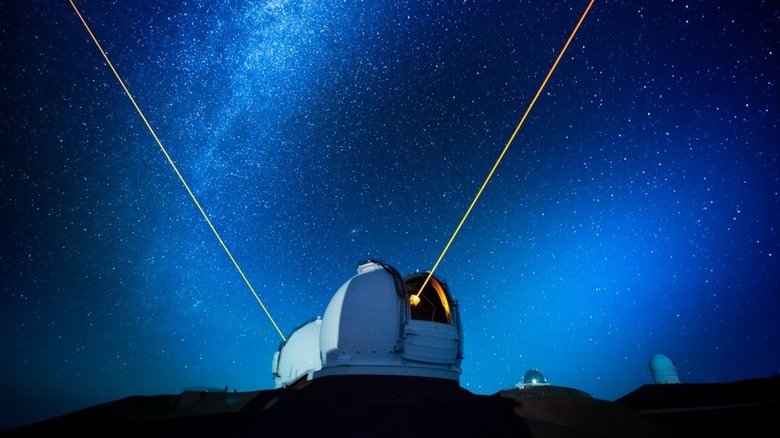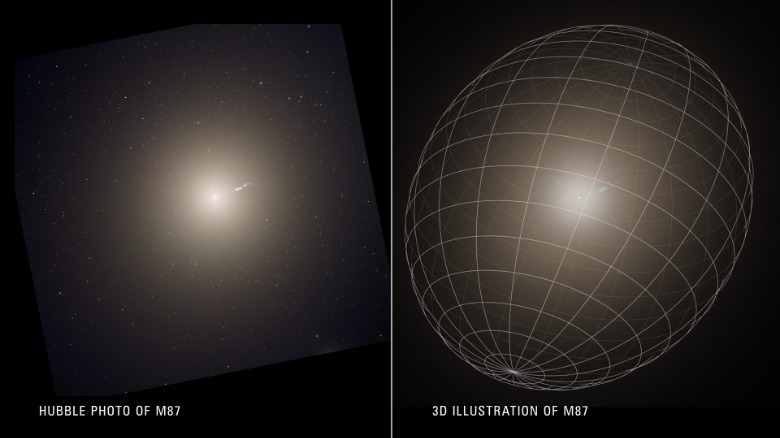Check Out This Incredible Galaxy Captured By The Hubble Space Telescope In 3D
A galaxy named Messier 87 (M87) has a monster at its heart that became famous when it was captured in the first-ever image of a black hole. Now, astronomers have revisited M87 and mapped out the galaxy's structure in three dimensions, using the Hubble Space Telescope in space and the Keck Observatory on the ground. In a study, astronomers describe how they were able to map out the 3D shape of this huge galaxy, which turns out to be potato-shaped. Other galaxies come in different shapes, most commonly a flat disk like our Milky Way, while others are ball-shaped and are called elliptical galaxies.
It's hard to observe galaxies in three dimensions because we can only get a limited view of them from Earth. To achieve this new view of M87, astronomers used Hubble and Keck as two different points giving a kind of stereo vision, similar to the way our eyes perceive depth. The researchers plotted out the way that stars moved around the enormous black hole at the center of the galaxy, which allowed them to learn about the galaxy's shape and rotation. The results also let the researchers refine the mass measurements of the famous black hole, finding that it is an incredible 5.4 billion times the mass of our sun. That's a reduction from the 6.5 billion times the mass of the sun that researchers estimated previously when they photographed the black hole in 2019.
How the 3D map of M87 was made
To get data on the structure of M87, the researchers used a new instrument at the Keck Observatory called the Keck Cosmic Web Imager (KCWI), which is specially designed to capture 3D data. The researchers looked at 62 different locations within the galaxy, which covered a region of around 70,000 light-years across, including the 3,000 light-years at the galaxy's center, which is denominated by the supermassive black hole. The galaxy is too far away for instruments to pick out individual stars, but they can see the rough shape of the stars as they move.
"It's sort of like looking at a swarm of 100 billion bees," said lead researcher Chung-Pei Ma of the University of California, Berkeley. "Though we are looking at them from a distance and can't discern individual bees, we are getting very detailed information about their collective velocities." Once the researchers had the information about the movements of these swarms of stars, they could use those to see how the gravity of the supermassive black hole was affecting them, which is what allowed them to work out its mass more accurately.
"Knowing the 3D shape of the 'swarming bees' enabled us to obtain a more robust dynamical measurement of the mass of the central black hole that is governing the bees' orbiting velocities," Ma explained. The data could also be used to learn about the spin of the black hole, which was not previously known, and which the researchers are currently working on.

